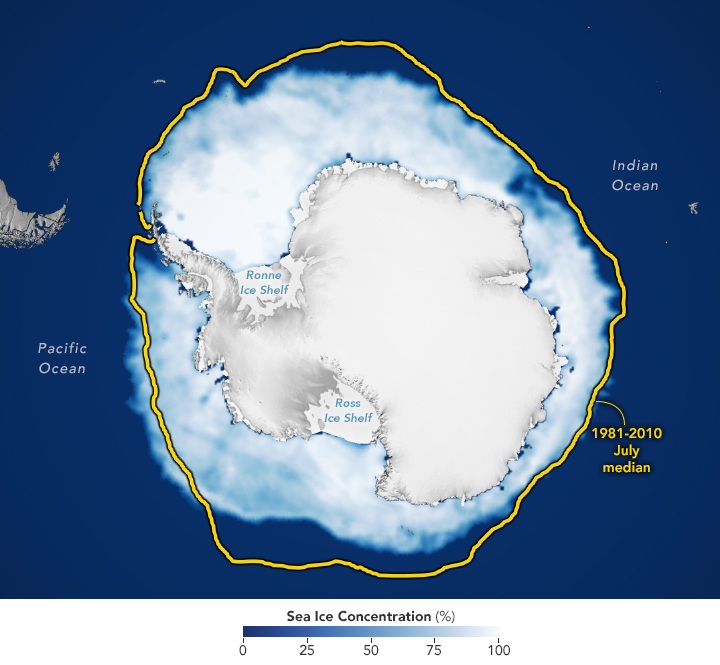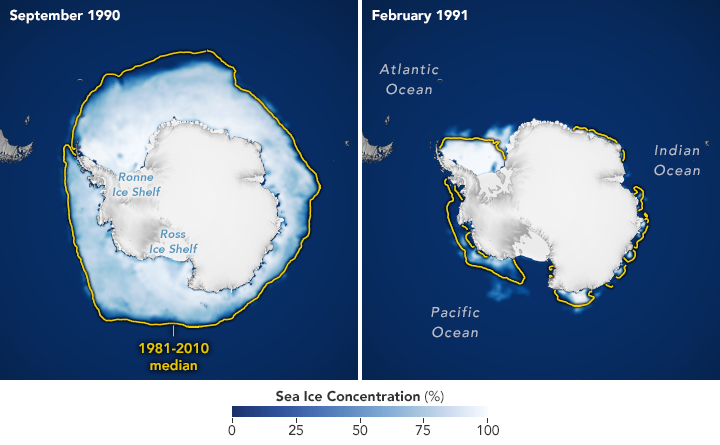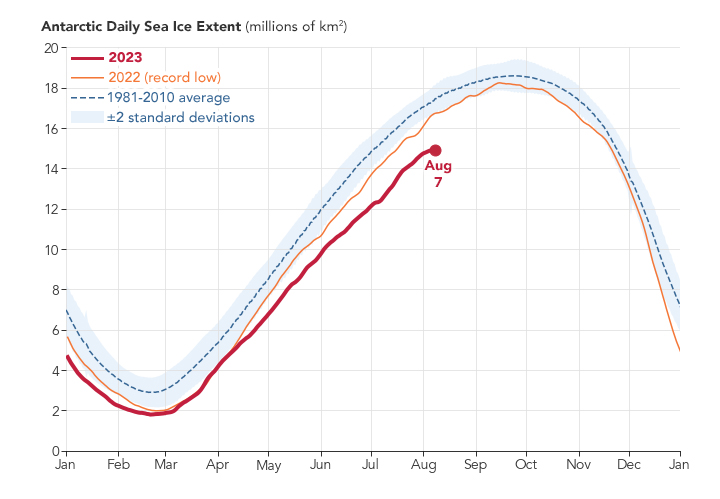 Did you know that Antarctica is currently having an unusual ice-melt season?
Did you know that Antarctica is currently having an unusual ice-melt season?
Well, this is true, there is less sea ice than ever recorded surrounding the coldest continent. Data shows that the ice on Antarctica’s surface now is roughly 17 million sq km. The usual September average is 1.5 million sq km higher!
Polar experts believe that instability in Antarctic sea ice could lead to bigger consequences. Let's find out more.
Why Sea Ice Matters
The ice in Antarctica helps regulate the entire planet's temperature. This is because the white surface of the ice reflects the energy from the sun back into the atmosphere.
There are two types of ice in Antarctica: sea ice and land ice. Sea ice is found above water and forms in the winter which lasts from March to October in the Southern Hemisphere. Sea ice melts in the summer and in fact, some areas around Antarctica become virtually ice-free.
 Land ice, on the other hand, consists of icebergs, glaciers, ice shelves, and more.
Land ice, on the other hand, consists of icebergs, glaciers, ice shelves, and more.
Sea ice is important for several reasons. Besides reflecting the sun's heat, it keeps the air cooler and forms a barrier with the warm waters below. Sea ice also forms a protective barrier around land ice and protects it from the ocean waves which otherwise could accelerate the breaking and melting of ice shelves.
Scientists track sea ice by using images and data collected from satellites. It makes it easier to monitor the sea ice, daily, monthly, and annually. Similarly, land ice is also tracked via satellites.
Impacts and Concerns
Prior to 2016, the sea ice in Antarctica was actually growing in size. But then it started to shrink after an extreme heatwave caused water temperatures to rise from -50ºC to -10ºC.
 Since then, there has been a steady decline in peak sea ice around Antarctica which is usually measured in September of each year.
Since then, there has been a steady decline in peak sea ice around Antarctica which is usually measured in September of each year.
If more sea ice starts to melt, more areas of the ocean will be exposed. Since water is darker than ice, it absorbs the sun's energy rather than reflecting it. The warmer waters can accelerate the melting of ice and more heat would be distributed across the planet.
When the Antarctic coastlines are exposed to warm waters, it could accelerate the collapse of ice shelves on land. When land ice melts, it causes sea levels to rise which, in turn, will impact coastal areas around the world.
As scientists continue to monitor sea ice changes around the polar regions, data such as these are important wake-up calls to reduce greenhouse emissions.
Sources: BBC, NY Times, NPR, NOAA, Climate.gov, Scientific American











